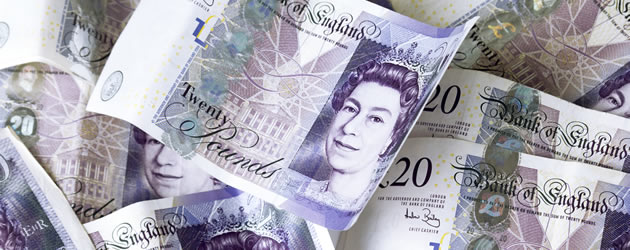- Decline in UK GDP eroded demand for Pound
- Fed interest rate hold boosted Euro
- EUR/GBP exchange rate softened by poor German inflation
- Eurozone GDP bettered forecast to shore up Euro
Stronger Eurozone GDP Bolstered Euro (EUR) Exchange Rate
After an unexpectedly strong Eurozone GDP result the Euro to Pound Sterling (EUR/GBP) exchange rate trended higher. Although domestic inflation dipped further into negative territory at -0.2% this failed to dent demand for the single currency ahead of the weekend.
Earlier…
Slowing UK GDP Ended Pound Sterling (GBP) Bull Run
The outlook of the UK economy was somewhat muted by the news that quarterly UK GDP had slowed from 0.6% to 0.4% in the first quarter of 2016. While this did accompany a less disappointing annual GDP figure investors were inclined to react bearishly, pushing the Pound (GBP) lower across the board. As ‘Brexit’ uncertainty was largely blamed for this slowdown markets were not overly optimistic for the country’s growth prospects ahead of the June referendum on EU membership, weighing on the appeal of Sterling.
Demand for the Euro (EUR), meanwhile, was boosted after the German GfK Consumer Confidence Survey showed an unexpected uptick from 9.4 to 9.7 for May. This suggestion of improved sentiment within the Eurozone’s powerhouse economy increased the appeal of the single currency, particularly as markets were preparing for the latest Federal Open Market Committee (FOMC) policy decision.
Euro (EUR) Exchange Rate Softened after Drop in German Inflation
As the Fed opted to leave interest rates unchanged once again the Euro to Pound Sterling (EUR/GBP) exchange rate continued to trend higher on Thursday morning. While the door was left open for a potential interest rate hike in June the general assessment was more dovish, increasing support for the single currency as the US Dollar (USD) weakened against rivals. The EUR/GBP currency pair was also boosted by a larger-than-forecast dip in the UK’s Nationwide House Prices Index, which slowed from 5.7% to 4.9% in April.
However, confidence in the Euro soon declined on the back of the latest German Consumer Price Index report. Inflationary pressure fell back from 0.3% to 0.1% on the year in April, disappointing investors and the European Central Bank (ECB) who had hoped to see a more sustained improvement in the country’s inflation outlook. As Carsten Brzeski of ING noted:
‘All in all, today’s numbers show that the March pick-up in inflation was only the result of one-offs and the timing of Eastern but not of a structural shift towards accelerating inflation. It might be hard for some German ECB-critics to digest, but even if the strongest Eurozone economy with low unemployment does not show any signs of inflationary pressures, the ECB after all might have a point in continuing its ultra-loose monetary policy.’
EUR/GBP Exchange Rate Forecast: Eurozone CPI & GDP Predicted to Extend Euro Downtrend
Ahead of the weekend the common currency could weaken further as German Retail Sales are forecast to demonstrate a marked slowing in consumer demand. Even if this measure should better expectations, however, sentiment towards the Euro will be dominated by the Eurozone CPI and first quarter GDP reports. Should the currency union show fresh signs of weakness, as anticipated, then the EUR/GBP exchange rate is likely to extend its losses.
While the UK GfK Consumer Confidence Survey is expected to show a continued decline in sentiment in April this is unlikely to offer a particular boost to the EUR/GBP currency pair, particularly if investors maintain their recent optimism with regards to the EU referendum.



